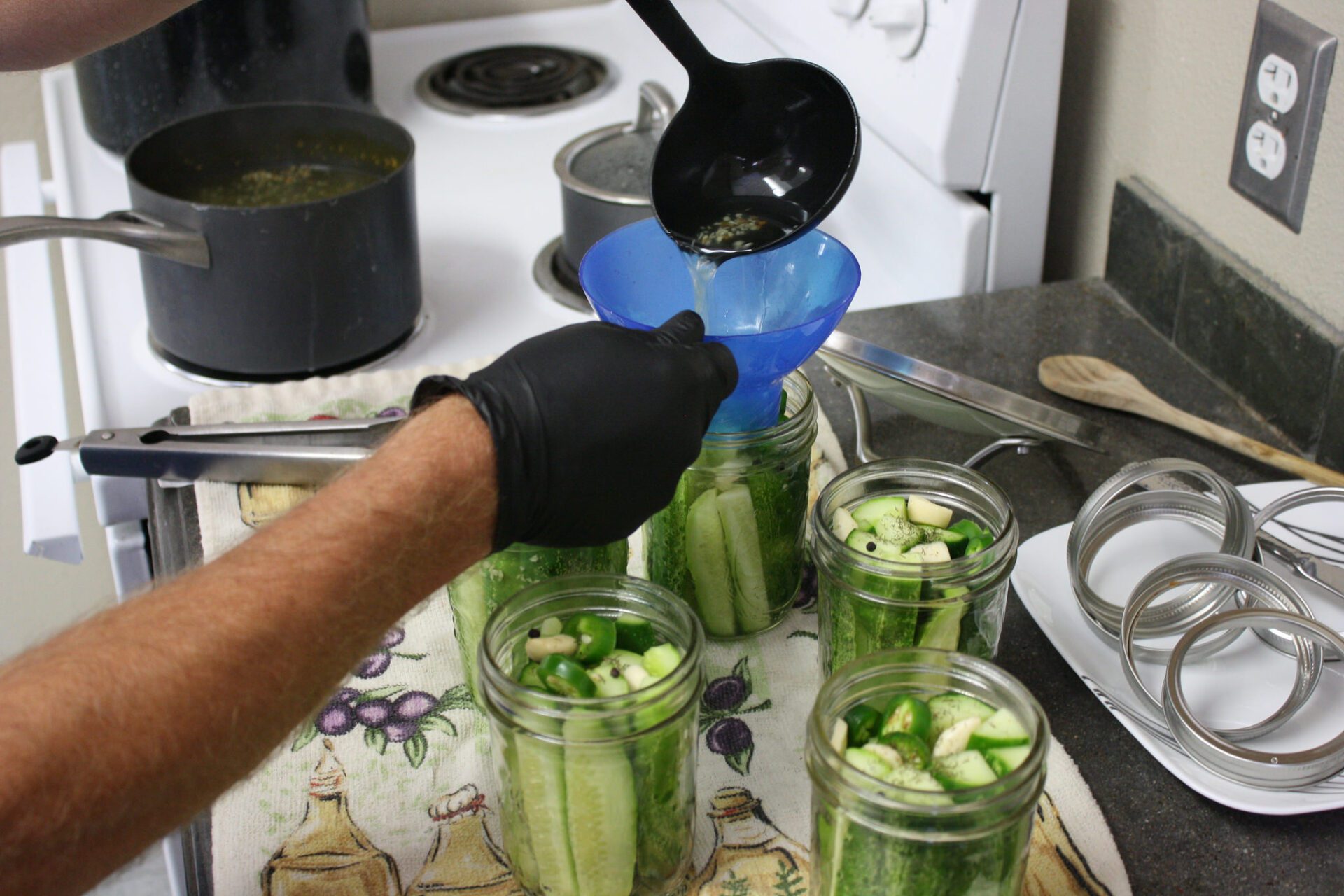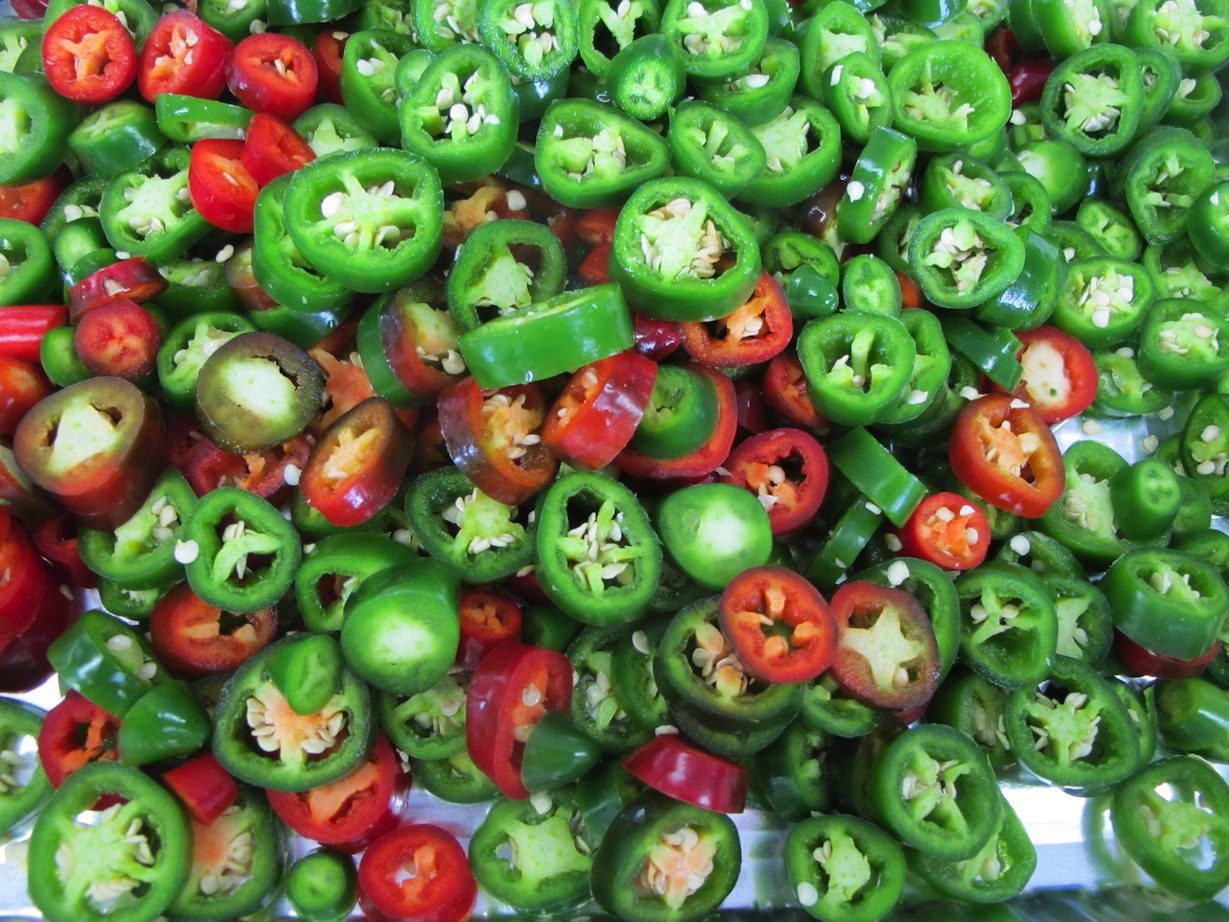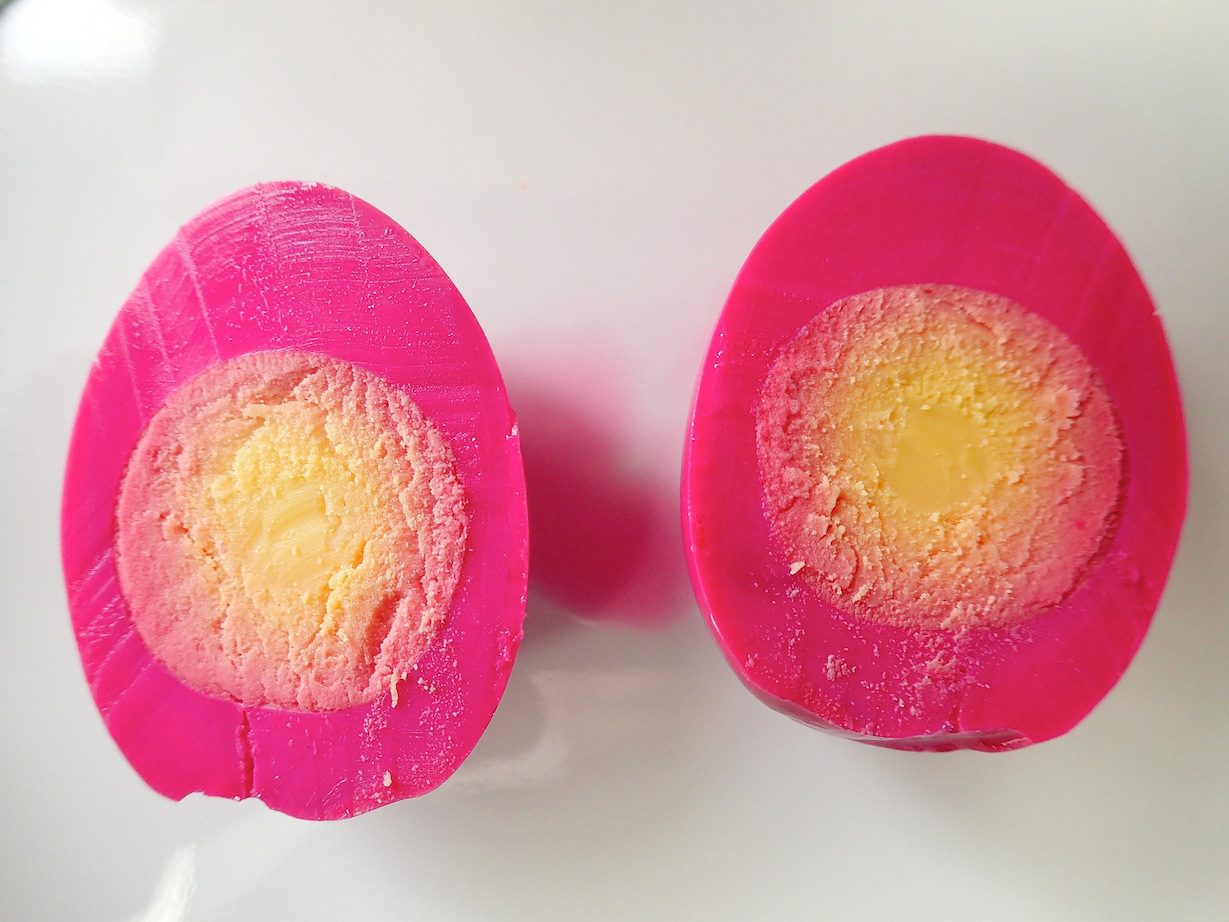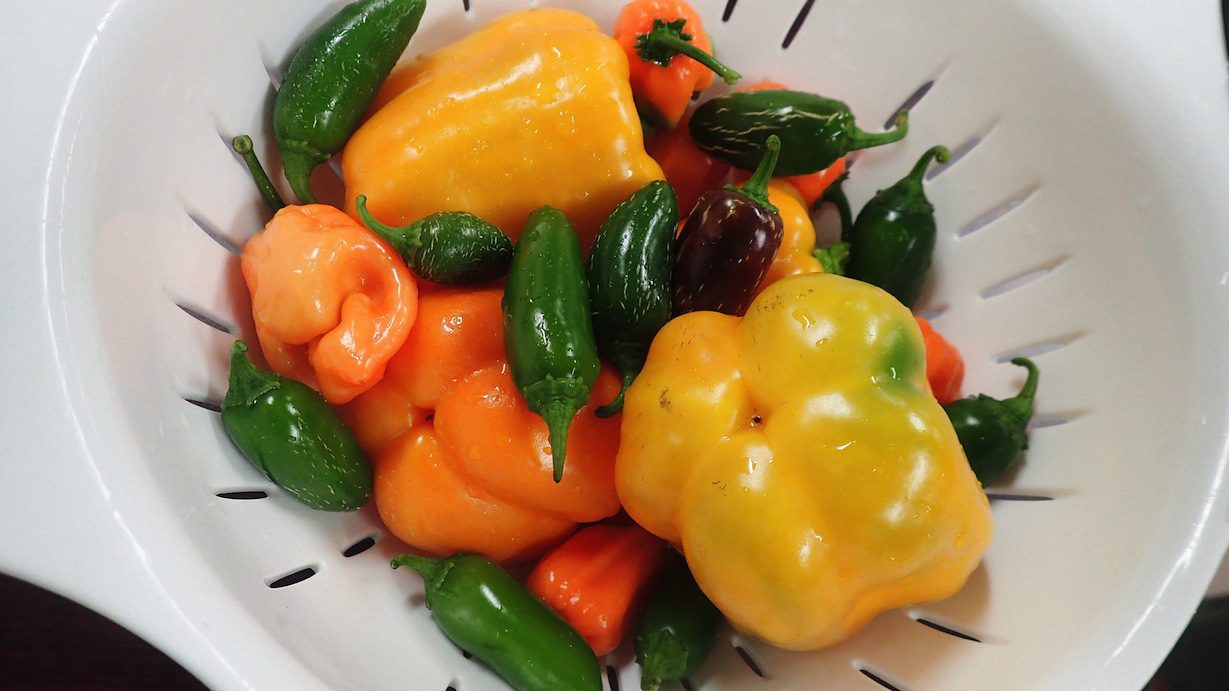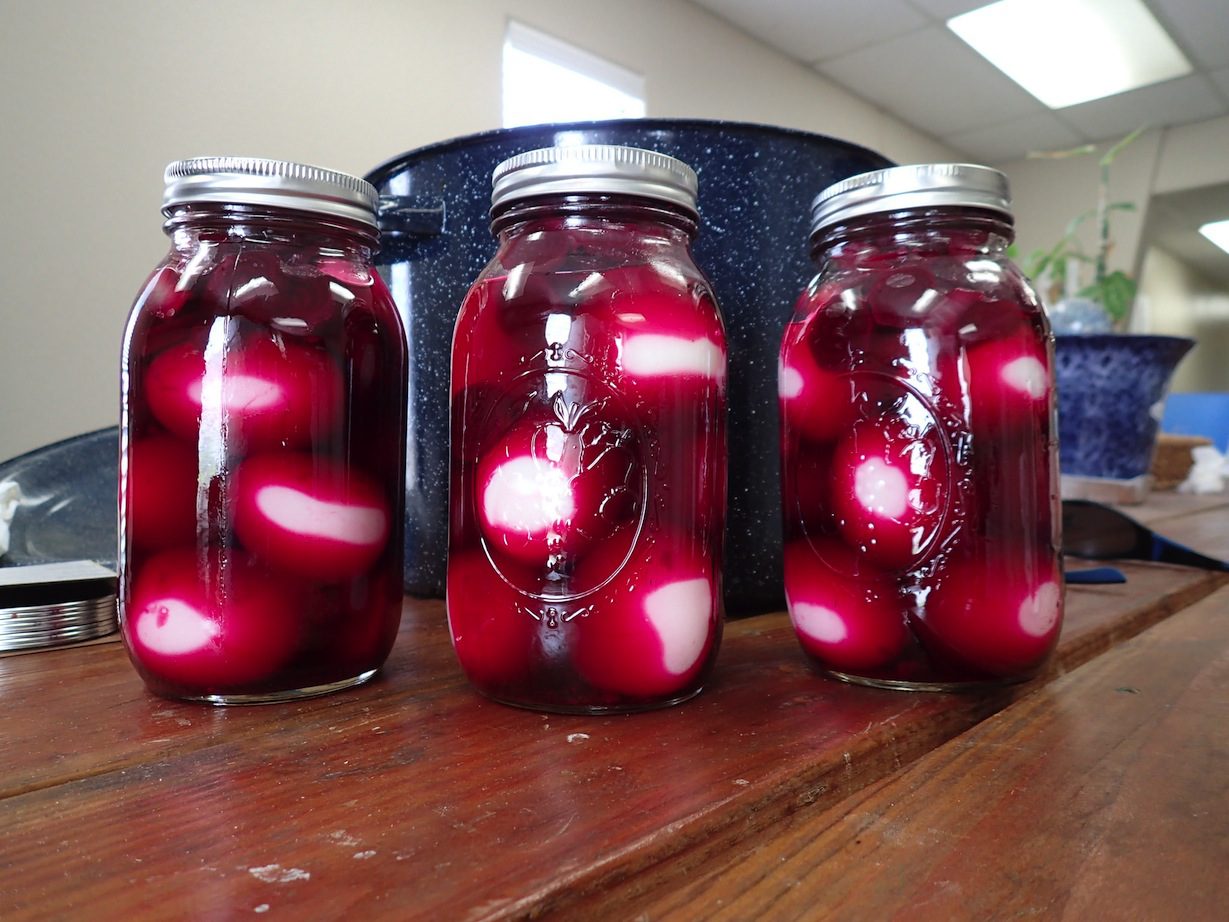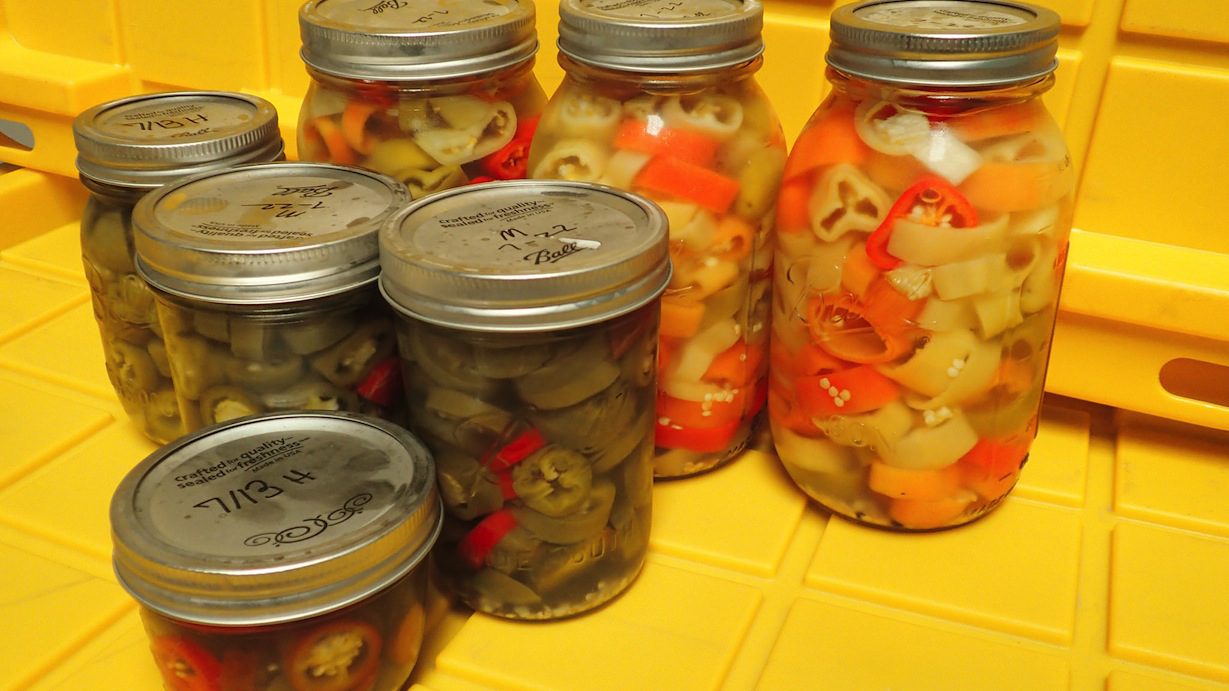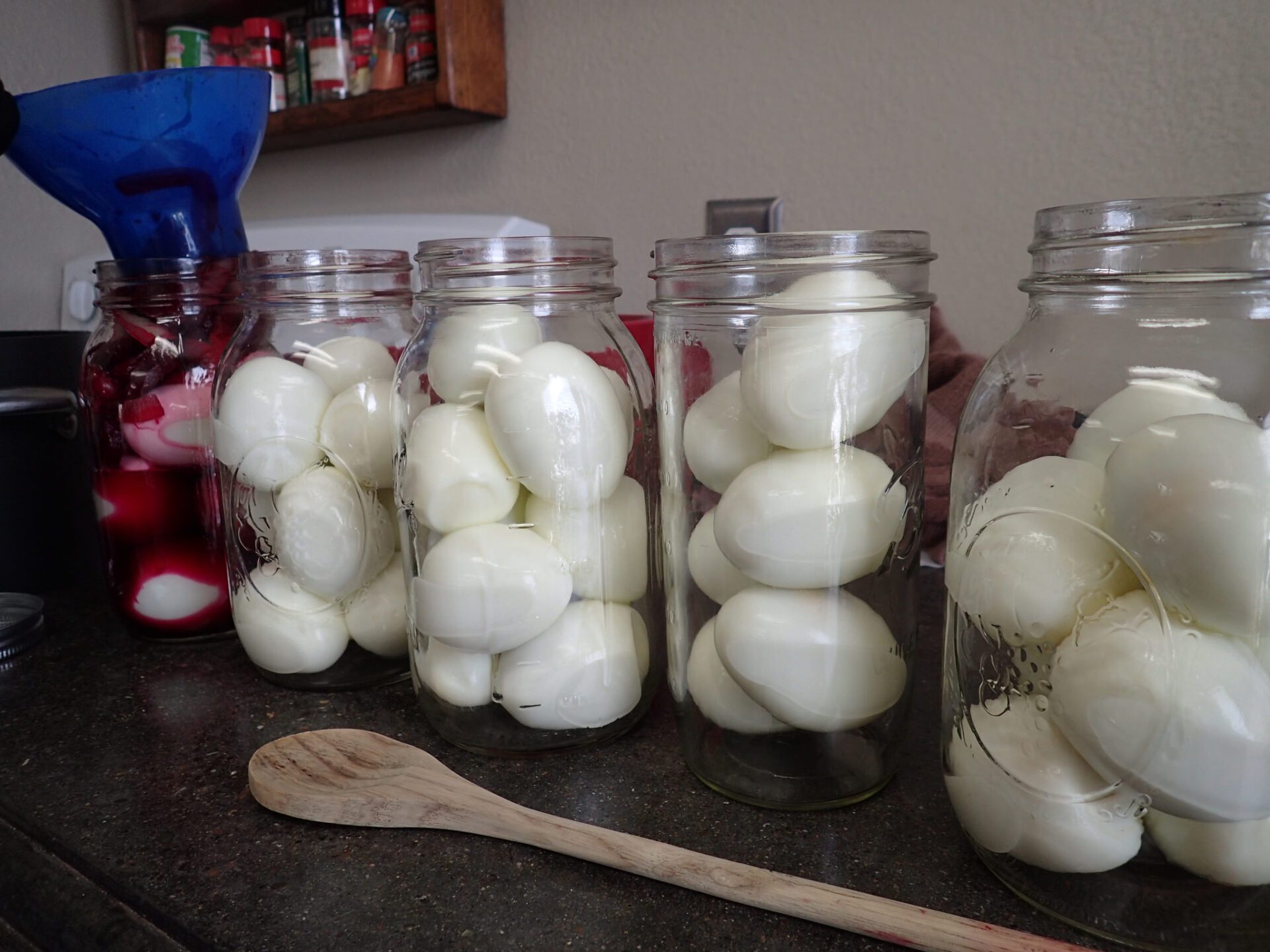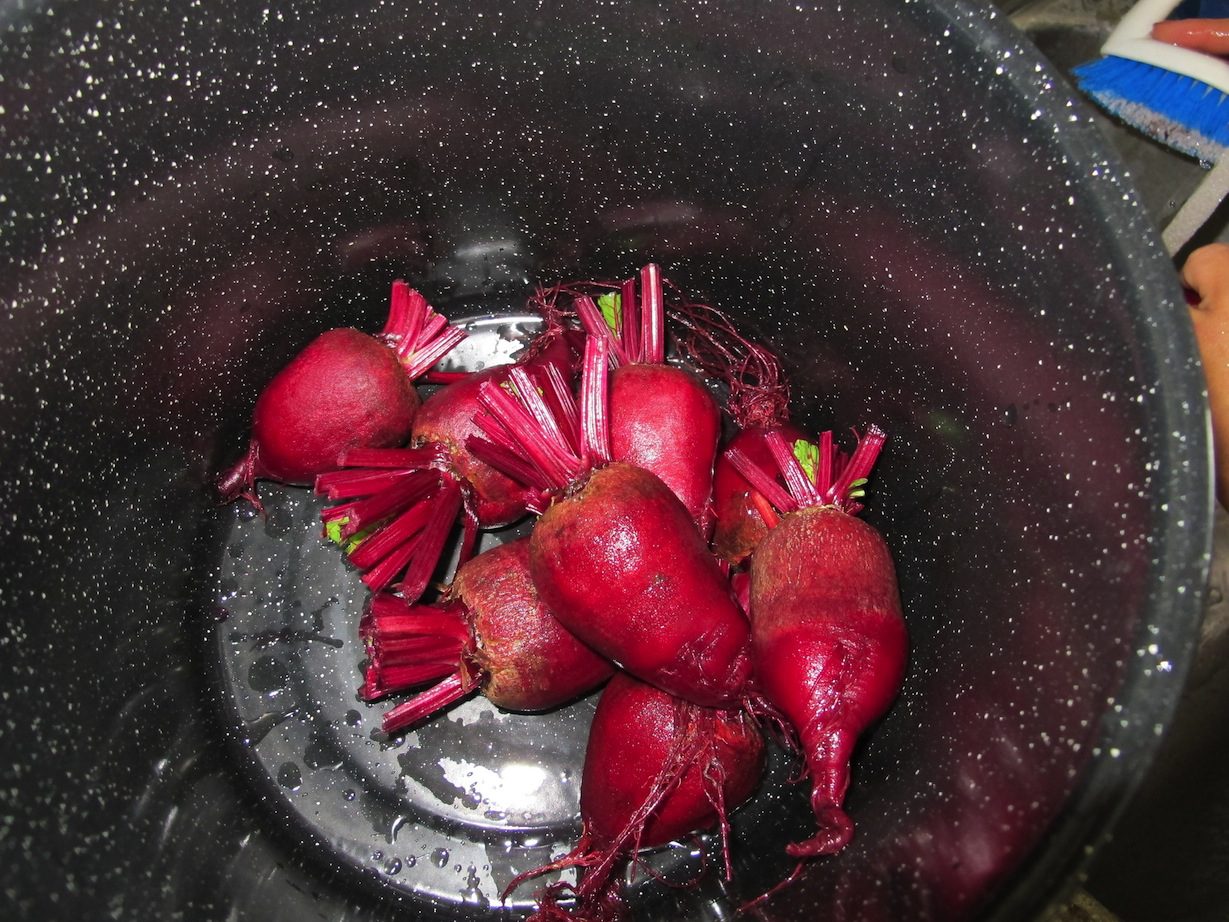Friday August 14, 2015
No doubt you’ve heard the tongue twister “Peter Piper picked a peck of pickled peppers…” But did you know a “peck” is a quarter of a bushel, or roughly two gallons? As the summer heats up, so does our pepper production, and to date we have picked a lot more than a peck of peppers. If you have ever seen our garden, you know we have a few more peppers than “average.” What do we do with so many peppers? Besides grilling stuffed peppers, grinding smoked peppers into chili powder, whipping up salsa on a weekly basis, and making large quantities of pepper jellies and hot sauce, we also like to pickle them!
We pickle our peppers with a basic brine consisting of vinegar, water, sugar, garlic, and picking salt. We also add a couple peppercorns to each jar before sealing them up. Once sealed, the jars are either put right into the refrigerator to ferment or are canned in a hot water bath to enjoy later in the year. Our most popular peppers are jalapeño nacho rings, but we also enjoy popping a few whole pickled jalapeño peppers in our mouths too!
Peppers aren’t the only produce from our garden we have pickled this year: we planted and pickled beets for the first time this spring. We were pleasantly surprised to find how tasty these beautifully colored vegetables were on top of a nice green salad, and will definitely plant them again in our garden next year. Our cucumbers have been quite prolific this year and have yielded many jars of pickles and pickled relish. But we didn’t stop there. Besides beets, cucumbers and peppers, we have pickled green beans, okra, and boiled eggs. This last one is probably the oddest item on the pickling list, but it has been a hit around the office. We even tried pickling a few jars of eggs using the brine from the beets. The outcome was purple eggs and a mixed review as far as the taste goes…they looked great, but we will probably just stick to the standard brine in the future.
Most foods can be pickled, but that doesn’t mean every food should be. Some are better suited to this preservation method than others. A good rule of thumb is to choose vegetables that do not wilt easily and are sturdy. Pickling is a very easy way to preserve vegetables long after we’ve harvested them. Probably the hardest part about pickling is waiting a whole month for fermentation to do the job.
And now for a little “fish” humor…
Q: What happens when you get some vinegar in your ear?
A: You suffer from pickled hearing!

